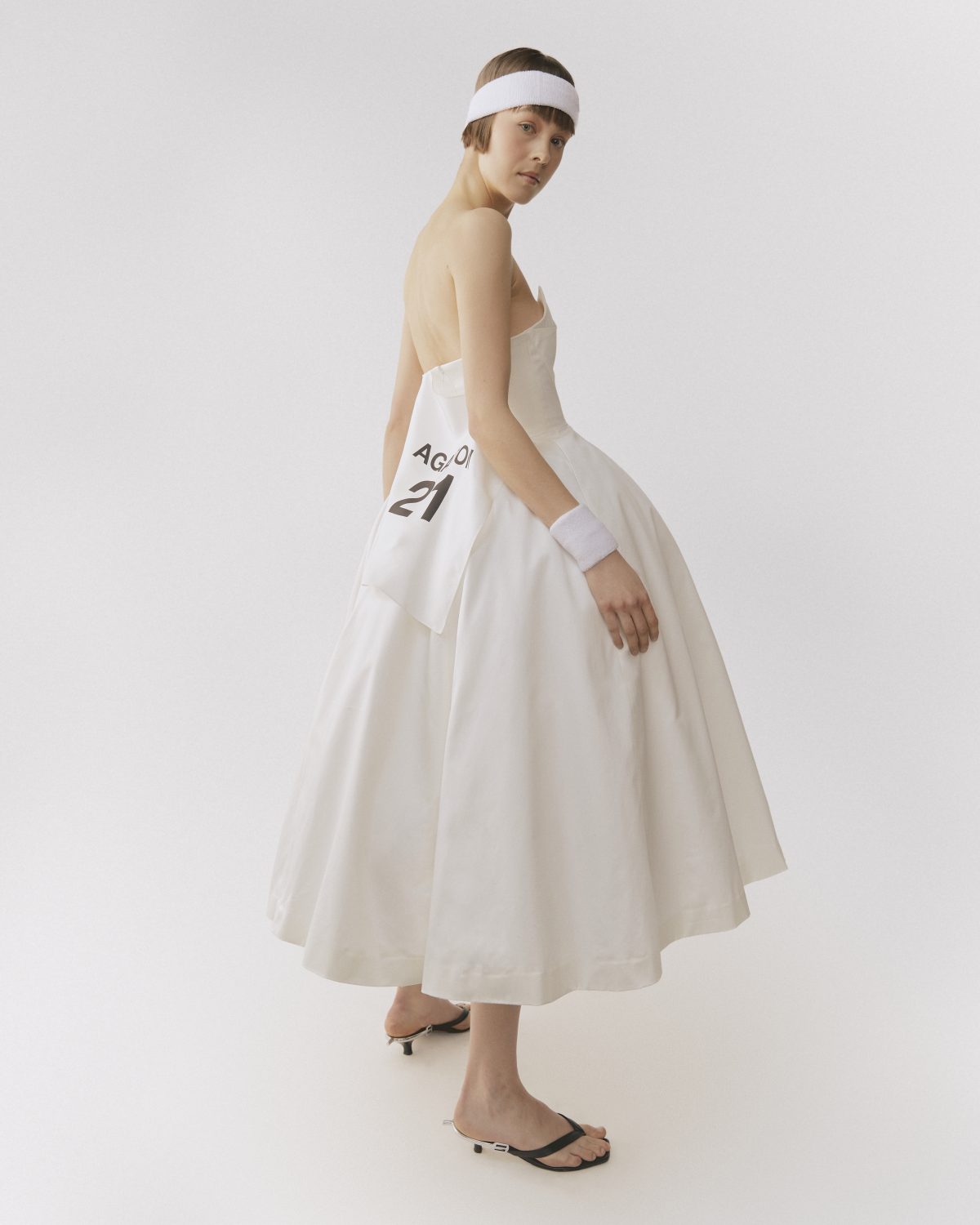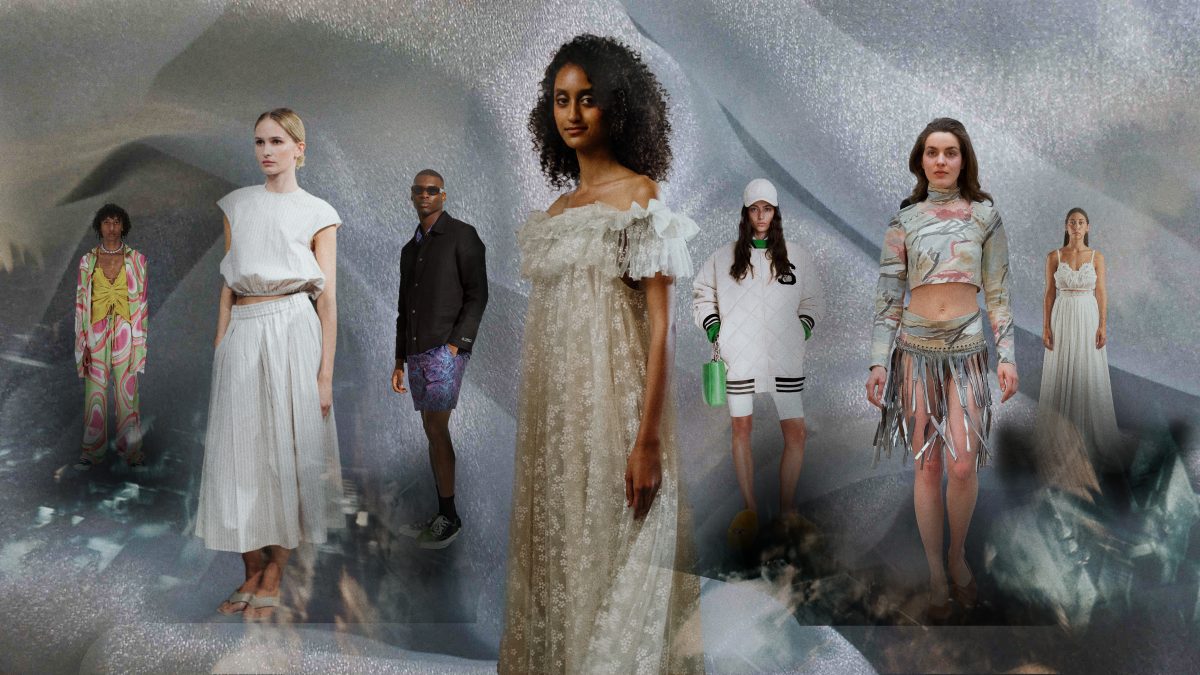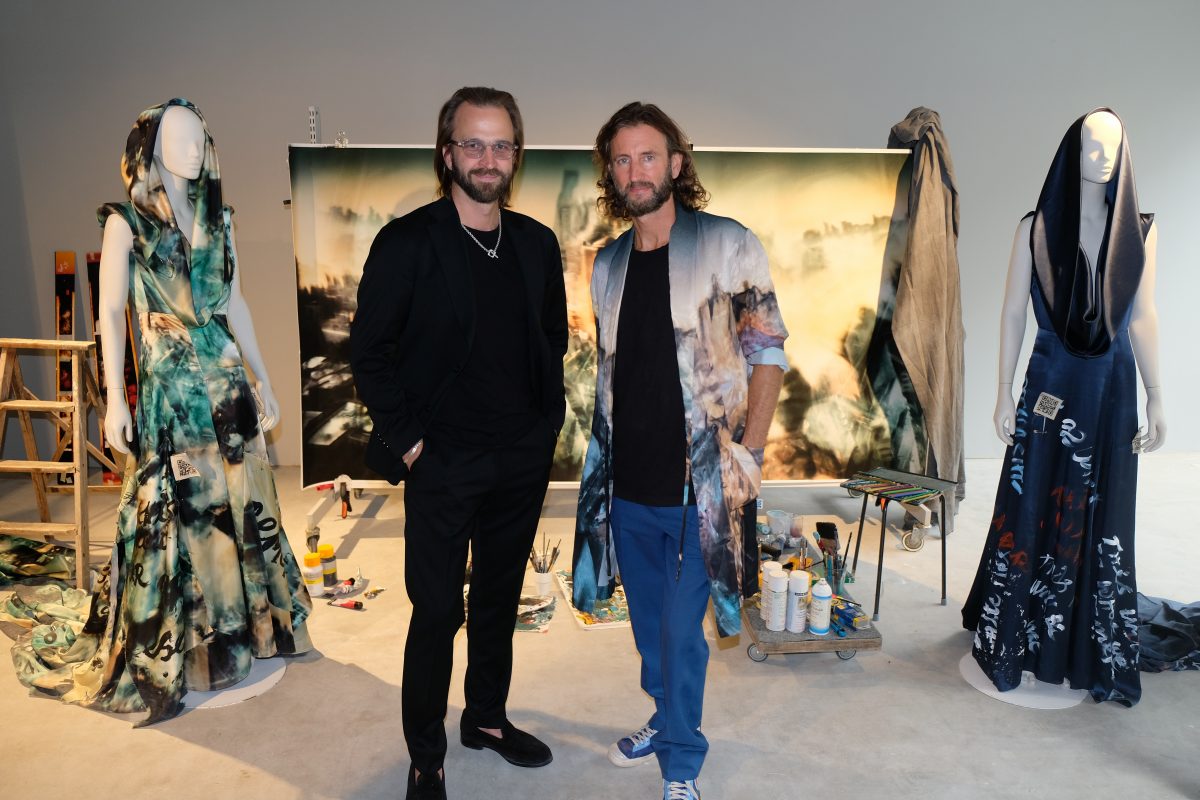
Earlier this summer the 23-year-old Beckmans College of Design-graduate, Filippa Agaton, received the New Talent Diploma from the Swedish Fashion Association. An honourable award, that gave her a spot on the official schedule of Stockholm Fashion Week. Agaton, who has experience from the Swedish brand Totême, has at a young age developed a refined, confident style that is both luxurious and sporty. Here we meet the designer to talk about her creative process, indecisiveness, having a wide scope of influences, and why she doesn’t want to start her own brand.
Tell us about the collection presented during Stockholm Fashion Week. What have been your inspirations?
— Starting up my final project at Beckmans was quite overwhelming at first. I felt both excited and sentimental. I started to think a lot about what kind of designer I want to be, what led me here and how I would manage to create a collection that reflected me. My impression has always been that designers are expected to niche their aesthetic expression and be consistent in this, something I have long struggled with. But during my graduation project, I realized that my various styles have, rather, become an asset. Personally, I have long felt that I shift between two contrasting expressions. On one hand, I want to create fashion that radiates elegance and femininity, but on the other hand, I also want to create a fashion that is oversized and sporty. I have frequently tried to choose one of these styles but just as many times I have changed my mind, and this indecision has long been an insecurity in how I see myself as a designer.


— But while preparing to work on my graduation collection it dawned on me that I have in fact always alternated between just these types of aesthetics. Already as a child, I would for periods dress exclusively as a princess, or keep to only wearing riding clothes or my big brother’s oversized sports clothes. Realizing that these aesthetics and this indecisiveness have always been a part of me made me appreciate it more and see how contradictory it is to limit one’s creative process. So for this reason I have in my graduation collection chosen to work with all the influences that built my interest in design and aesthetics, and I have come to see my indecision as a great asset instead of regarding it as a weakness.
What does it mean for you as a young designer to receive the New Talent Diploma and to show during SFW?
— When I got this award and the opportunity to show at SFW it felt incredible to get that type of recognition. When you work so hard on something for so long it’s easy to lose perspective, so at times during the process, I was really unsure about how the collection would be received. But it has been such a wonderful experience, just to have had this platform to show my work and meet all the wonderful people working with Stockholm fashion week and the Swedish fashion association. I am so overwhelmed by all the kind words and the beautiful response that I’ve had!
Looking at your graduation collection, it has influences of both being sporty and chic at the same time. What type of woman would you say that you are designing for?
— I don’t think that I’m alone in the struggle of being in between aesthetics, I actually think most people can relate to this. And just considering how giving this project has been for me personally, to finally allow myself to work with all the influences that built my design interest instead of limiting myself to fit into one category, I think that many people might appreciate this merge of aesthetics, not having to choose, I know I have.
— This project has really been so challenging, yet still so liberating, for me in my creative process. So of course it’s been very important for me personally, but it also made me want to question the designer role and what is expected of it. I truly feel that being a designer, perhaps, even more, a design student, you are expected to niche your expression so early on and then stay within that niche, and I think that is so unfortunate and limiting. I can’t see the reason to ever put up a framework for your creativity. I really hope that this is a pattern that will grow away with time and allow more design students a less limited creative experience.

How has your time at Totême influenced your personal work?
— Of course, Totême has affected me in many ways, but I also think that we share the same type of aesthetic from the beginning. I feel like my relationship with Totême goes way back, I have admired the brand basically ever since they started in 2014, and Åsa Stenerhaag, the prior head of design at Totême, helped me to first find my way into their retail team in 2019 working as Studio associate in the store while studying at Beckmans. And being there I could eventually do my internship in 2020 with the design team which I am now lucky to be part of. Åsa has also been a sort of mentor to me during my graduation project which has been amazing and so helpful. I am so happy today to be working at a company with such positive energy and an inspiring team where one is allowed to grow and evolve within the company, so I feel really lucky to be there!
Sustainability is more or less inevitable within fashion these days. My experience is that brands that are young and more up-and-coming often have a more innovative and holistic approach to the matter. What is your take on sustainability?
— Definitely, I completely agree. I think that younger brands usually have sustainability in mind throughout all stages of the process, which is the only way to go today. Personally, I also consider quantity to be perhaps the main problem within the fashion industry today, we produce clothes as if they were a consumption product. I think that older, more established brands might have difficulty downscaling their production, but I think that’s a key step towards a more sustainable fashion industry. Of course, the democratization of fashion that led us here had its positive aspects at the time, but fast fashion just isn’t an option for the future. And personally, I don’t consider the thought of collections running out of stock to be nearly as scary as if they don’t. For me, it feels absurd to think that we today produce more clothes than we can actually sell, and even if all the materials would be eco, compostable or sustainable in some other way, I still can’t see how it could be sustainable to produce that amount of anything. So to summarize this, I hope to see more thought and consideration in the fashion industry going forward. That we will slow down the phase, decrease the quantity, increase the quality to give the clothes longer life. I hope that more people will acknowledge the value of each piece produced and design with thought and purpose.
What are your future aspirations with your work?
— Recently I’ve gotten the question a lot if I would like to start my own brand, so I’ve been giving it a lot of thought. But personally, speaking about sustainability, I don’t think I could ever justify adding another brand to the fashion industry just to put my name on it. Not unless I actually thought I would make a positive difference to the fashion industry by adding this brand if I really felt that there was something important lacking which I could contribute with. But as I said before I see quantity as the main problem with this business, so as long as there are companies that share my aesthetic and values, such as Totême today, I see no reason to add just another brand.



